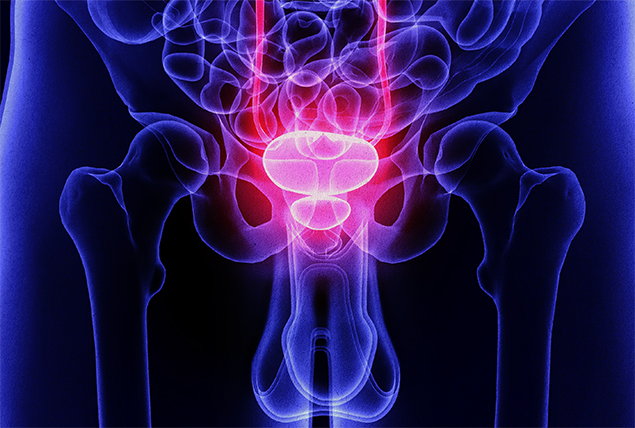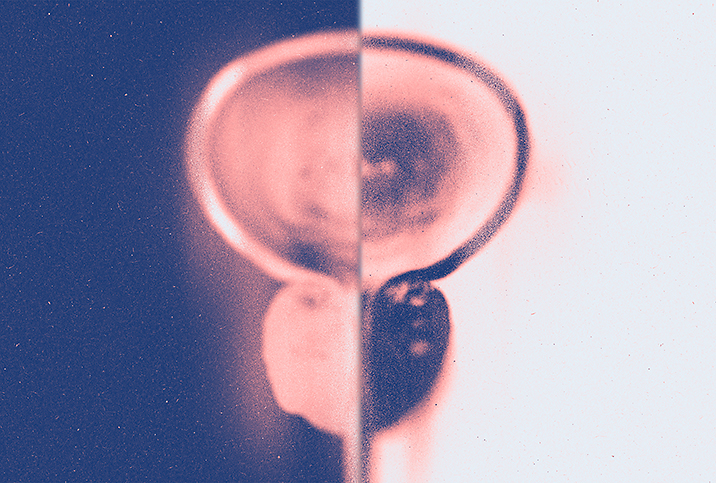These Are Prostatitis' Causes and Symptoms

The prostate is a walnut-sized gland that sits in front of your rectum, below your bladder. It surrounds part of your urethra and creates some of the fluid in your semen, among other functions.
A relatively common dysfunction of the prostate gland is prostatitis, or the inflammation and swelling of the prostate gland.
Prostatitis affects men in all age groups but is more common in males under age 50. Men with prostatitis may experience pain while urinating or ejaculating, along with flu-like symptoms and extreme tenderness in the groin area. What are the primary causes and symptoms of prostatitis?
What is prostatitis?
Prostatitis may refer to one of several different dysfunctions of the lower pelvis, including acute bacterial prostatitis, chronic bacterial prostatitis and chronic pelvic pain syndrome (CPPS). It can cause pain in the lower pelvis, inflammation of the prostate gland and infection.
Four distinct conditions fall under the umbrella of prostatitis: two linked to urinary tract infections (UTIs) and two that are not. Men who have prostatitis may experience infection, inflammation or pain that seems to be centered in the area of their prostate gland or in the lower pelvic region.
The medical community has evolving views on prostatitis. Some evidence suggests many men are incorrectly diagnosed with prostatitis when the prostate gland itself is not the central issue or cause of the symptoms.
What are the types of prostatitis?
Prostatitis is a fascinating condition because it's actually several different conditions that cause similar symptoms in the same region. The four main types of prostatitis are acute bacterial prostatitis, chronic bacterial prostatitis, CPPS and asymptomatic inflammatory prostatitis.
Acute bacterial prostatitis
With this type of prostatitis, a UTI infects the prostate gland, which requires prompt medical intervention. Symptoms may include the following:
- Fever
- Chills
- Painful urination
- Frequent urination
- Difficulty urinating
Chronic bacterial prostatitis
Chronic bacterial prostatitis is one of the more difficult types of prostatitis to treat. It occurs when bacteria remain in the prostate gland and cause recurrent UTIs.
Chronic pelvic pain syndrome
This is the most common type of prostatitis and it affects one-third of all men, according to Cleveland Clinic. It may involve inflammation of the prostate gland as well as ongoing, chronic pain in the pelvic region, including pain in the perineum and genitals.
Asymptomatic inflammatory prostatitis
In this type of prostatitis, the prostate gland becomes inflamed, but the man experiences no symptoms. He may not even realize he has it unless and until he has certain tests done–for instance, a semen analysis as part of fertility testing may detect it. It doesn't require treatment.
What are the causes of prostatitis?
The various types of prostatitis have different causes.
For bacterial forms of prostatitis, some of the potential causes may be:
- Bladder stones or bladder infections
- Surgery that required the use of a catheter
- Prostate stones
- Failure to empty the bladder completely
- UTIs
"For acute bacterial prostatitis, risk factors could include urinary tract infections, any type of urologic procedure, if they had any kind of catheter or a surgery through the urinary tract, if they have phimosis, or even unprotected intercourse or anal intercourse," said Neel Parekh, M.D., a men's fertility and sexual health specialist with Cleveland Clinic.
The causes of CPPS are often more obscure and may include autoimmune diseases, chronic fatigue syndrome and irritable bowel syndrome, among others. CPPS has also been connected to chronic stress and pelvic floor muscle dysfunction.
Pelvic floor dysfunction is perhaps one of the most intriguing potential causes of prostatitis, and it currently has the attention of many in the medical community.
The pelvis is shot through with tons of nerves that emanate from the bottom of the spine and provide innervation (stimulation) to a number of highly sensitive organs, including the penis, testicles and prostate gland. The bounty of nerves in the region increases the likelihood of something called referred pain, in which pain or inflammation in one part of the body is registered as pain in another.
For instance, poor posture or sitting too much may lead to lower back dysfunction that can register as testicular pain or prostate pain.
"Some of the ways to understand if a man has pelvic floor dysfunction that may be contributing to his pelvic pain—or prostatitis—include if he has bowel, bladder and sexual function concerns, as pelvic floor muscles and nerves are intimately involved in all of these functions," said Amy Pearlman, M.D., a men's health specialist and co-founder of Prime Institute in Fort Lauderdale, Florida.
Some of the particular concerns Pearlman mentioned that a man might have, which could indicate a pelvic floor connection to his prostatitis, include the following:
- Buttock pain while sitting
- Referred sciatic pain
- Pain referred to the medial aspect of thigh (upper inside part)
- Suprapubic pain (pain above the pubic bone)
- Urinary frequency and/or pain with a full bladder
- Pain after ejaculation
- Pain during/after intercourse
- Erectile dysfunction (ED)
How common is prostatitis?
Prostatitis is an extremely common condition. It affects about 50 percent of men at one time or another and is the most common urinary tract condition in men under the age of 50.
For men older than 50, it's the third most common. About 2 million men schedule a visit with a healthcare provider annually due to concerns about prostatitis, according to the National Institutes of Health (NIH).
Who is at risk for prostatitis?
As previously noted, prostatitis is a very common condition. With that said, some of the risk factors that may lead men to develop prostatitis include the following:
- Having a UTI
- Having an injury to the groin
- Undergoing a procedure or test that requires a urinary catheter
- Having a prostate biopsy performed
- An enlarged prostate
- Problems with urination, such as being unable to empty the bladder
- Previously having prostatitis
The NIH noted men with nerve damage in the lower urinary tract due to trauma or surgery may be more likely to develop the CPPS version of prostatitis. Psychological stress was another CPPS risk factor mentioned.
What are the symptoms of prostatitis?
The symptoms for each type of prostatitis may have similarities, but there are frequently crucial differences.
The symptoms of acute bacterial prostatitis include the following:
- Fever
- Chills
- Urinary frequency
- Urinary urgency
- Burning or pain while urinating
- Genital, groin, lower back or lower abdomen pain
- Frequent urination during the night
- Body aches
- Nausea and vomiting
- Trouble starting your stream
- Urinary retention (the inability to completely void your bladder)
- UTI
Among the symptoms of chronic bacterial prostatitis are the following:
- Urinary frequency
- Urinary urgency
- Burning or pain while urinating
- Genital, groin, lower back or lower abdomen pain
- Frequent urination during the night
- Painful ejaculation
- Trouble starting your stream
- A weak or interrupted stream
- Urinary retention
- Urinary blockage
- UTI
For chronic pelvic pain syndrome, symptoms include pain or discomfort that lasts more than three months in one or more of these areas:
- The perineum (the area between the scrotum and anus)
- Central lower abdomen
- Penis
- Scrotum
- Lower back
Other symptoms may include the following:
- Painful ejaculation
- Pain in the urethra or penis during urination
- Urinary frequency
- Urinary urgency
- A weak or interrupted stream
Conclusions
Prostatitis is a complex, multidimensional condition that is often difficult to pin down right away. Ruling out or even treating a bacterial infection is often just the first step in a long process of potential treatment.
Your primary healthcare provider or urologist may be able to refer you to a pelvic floor specialist, if appropriate, who can provide you with therapy that can make a difference.


















